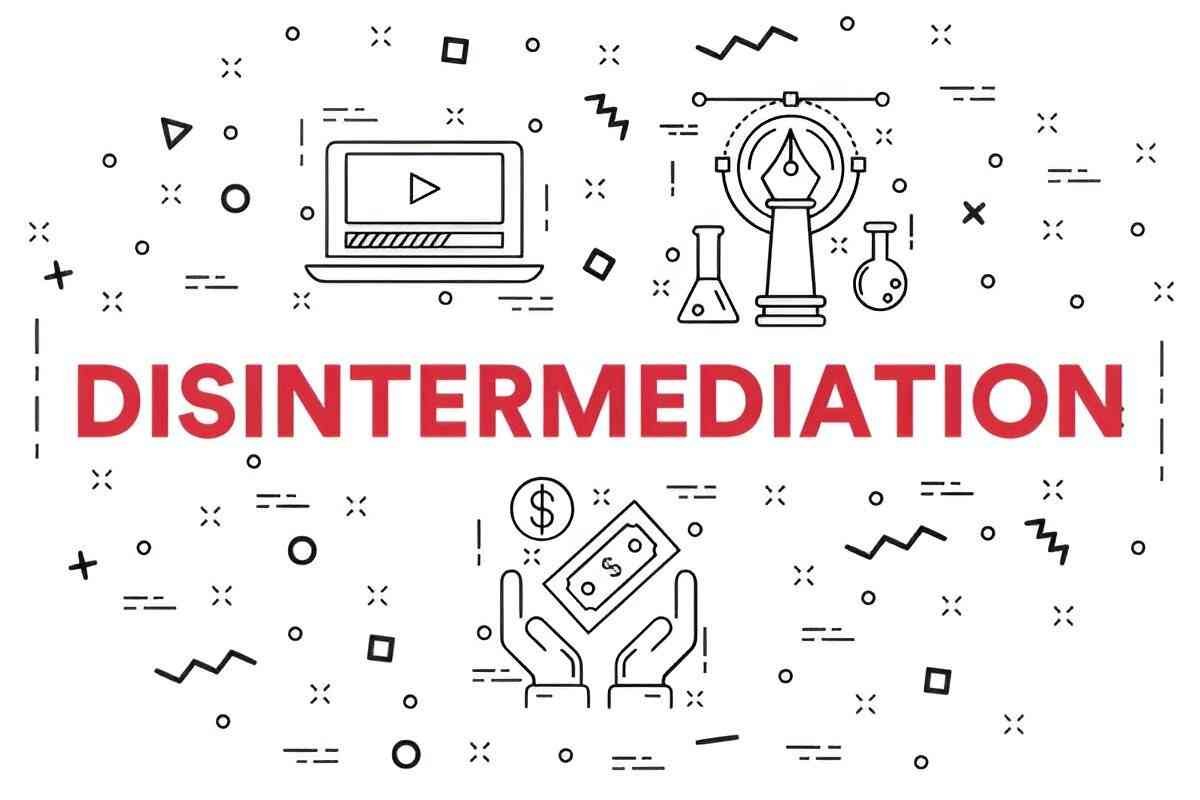Disintermediation refers to the process where intermediaries or middlemen are bypassed or eliminated from a supply chain or transactional process. It typically occurs when technology or other changes enable direct interaction between producers and consumers, reducing the need for intermediaries who traditionally facilitate transactions or distribution. Disintermediation often results in cost savings, efficiency gains, and direct relationships between buyers and sellers.
Table of Contents
Key Aspects of Disintermediation
- Bypassing Intermediaries: Disintermediation eliminates intermediaries such as wholesalers, distributors, or brokers who traditionally connect producers with end-users.
- Direct Transactions: It facilitates direct transactions between producers (or suppliers) and consumers, allowing them to interact without intermediaries.
- Technological Impact: Advances in technology, particularly the internet and e-commerce platforms, have accelerated disintermediation by enabling direct communication and transactions.
Examples of Disintermediation
- E-commerce Platforms:
- Scenario: A manufacturer of artisanal goods sells directly to consumers through its own website or online marketplace.
- Impact: By bypassing retail stores or distributors, the manufacturer retains higher margins and can offer competitive prices to customers.
- Financial Services:
- Scenario: Investors use online trading platforms to buy and sell stocks or other financial instruments without using traditional brokers.
- Impact: This reduces transaction costs and provides investors with direct control over their investments.
- Media and Publishing:
- Scenario: Authors self-publish their books electronically through platforms like Amazon Kindle Direct Publishing.
- Impact: Authors can reach readers directly, earning higher royalties compared to traditional publishing contracts.
Benefits of Disintermediation
- Cost Savings: Eliminating intermediaries reduces transaction costs, allowing producers to offer lower prices or retain higher margins.
- Efficiency: Direct transactions often streamline processes, reducing lead times and improving responsiveness to customer needs.
- Market Access: Disintermediation can open new markets or customer segments that were previously inaccessible through traditional channels.
Challenges of Disintermediation
- Quality Control: Direct interactions may pose challenges in maintaining quality standards or customer service levels compared to intermediated transactions.
- Distribution Logistics: Manufacturers may face challenges in logistics and distribution without the support of established intermediaries.
- Market Reach: Some markets or customer segments still prefer or rely on traditional channels, limiting the scope of disintermediation.
Role of Technology in Disintermediation
- Internet and E-commerce: Online platforms provide a direct channel for businesses to reach global markets without intermediaries.
- Blockchain Technology: Blockchain enables peer-to-peer transactions, reducing reliance on financial intermediaries in sectors like banking and insurance.
Example: Disintermediation in Banking
- Traditional Model: Customers typically accessed banking services through branch networks and relied on personal bankers for transactions and advice.
- Disintermediation Effect: With the rise of online banking and mobile apps, customers can now perform transactions, investments, and even financial advice consultations directly through digital platforms.
- Impact: Banks are adapting by reducing branch networks and investing in digital platforms to meet customer demand for convenience and cost-effectiveness.
Conclusion
Disintermediation represents a shift towards direct interactions between producers and consumers, facilitated by technological advancements and changing consumer preferences. While it offers benefits such as cost savings and efficiency gains, organizations must navigate challenges such as maintaining quality control and managing direct distribution logistics. Understanding disintermediation is crucial for businesses seeking to leverage technological innovations to optimize operations and enhance customer relationships in a rapidly evolving marketplace.





